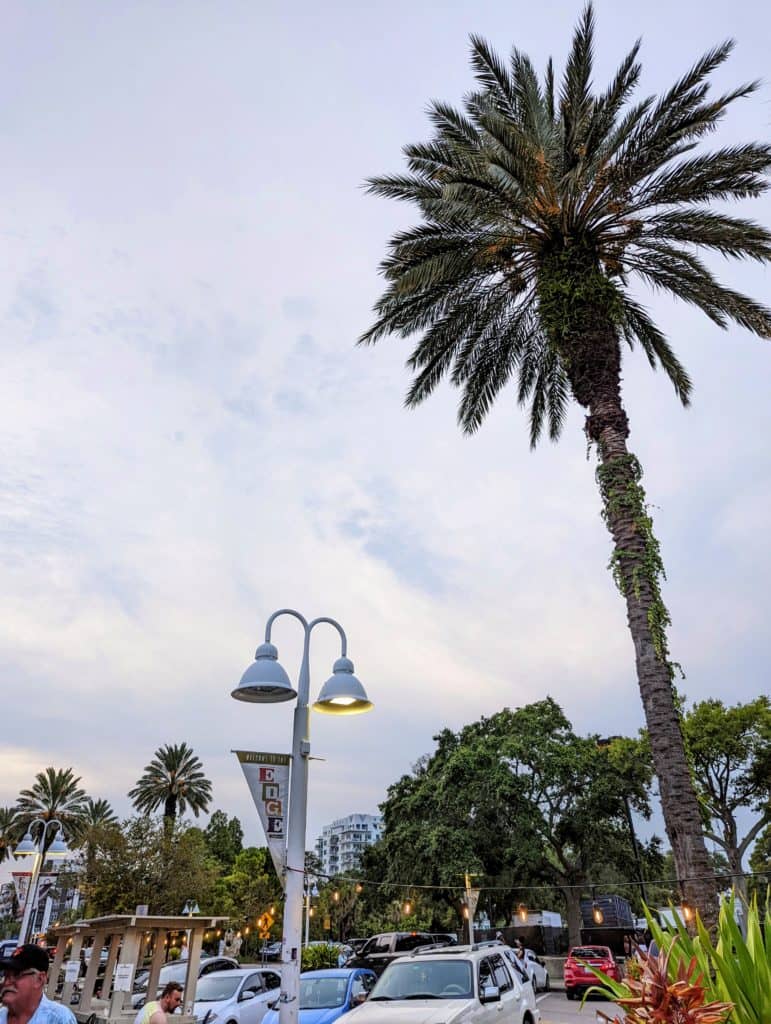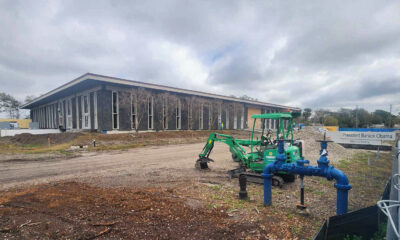Thrive
The parking paradox in downtown St. Pete

Parking in St. Peterburg presents somewhat of a conundrum to city officials, as they must balance rapid growth with walkability and a desire to create more space for affordable housing.
Thursday morning, members of city council, acting as the Public Services and Infrastructure Committee, discussed reductions in parking requirements for multi-family dwellings located in and around downtown. However, much of the discourse also covered congestion emanating from the Pier District.
Committee Chair Ed Montanari asked for the update and stated that he ran for office to protect and preserve St. Petersburg’s quality of life and promote business in the city.
“And to me, this parking issue kind of covers both of those issues.”
Liz Abernethy, director of planning and development services, began her presentation by explaining the city’s reduction in parking requirements in recent years. A 2019 ordinance stipulated that downtown units less than 750 square feet do not require parking spaces.
The ordinance also allowed for a 10% reduction in spaces for certified affordable and workforce housing units and those within 1/8 of mile of a high-frequency transit route. City Administrator Rob Gerdes told the committee that developers were taking advantage of those allowances.
According to county documents, the parking decrease provides several benefits, including promoting walkability and offering a cost-saving incentive for developers to provide additional dwellings.
“When parking spots – the last number I heard was $34,000 a spot to build – you got to figure out a different answer than adding parking spots,” said Councilmember Copley Gerdes. “I don’t think anyone wants to be in the building parking spot business out in the city at $34,000 a clip. We’ve got to come up with other answers.”
Abernethy said the city was unsure if the market would take advantage of the “zero-parking” allowance in 2019. She called it a novel idea and relayed that most of the projects at the time provided more than the required number of spaces.
Currently, five projects with no parking and four that offer less than one space per unit have received city approval or are “in the queue.” Those represent 17% of the city’s planned developments, said Abernethy, but just 6% of the total units.
“So, when you break that down to how many units are coming online that have no parking, it’s really a fairly minimal number,” she said. “None of the projects have started construction yet.”
However, Abernethy did note that city officials are seeing more people without vehicles moving into downtown. She called it a generational shift, represented by “both ends of the generational spectrum.”
The code change also reduced parking requirements for small downtown businesses, including cafes, restaurants and microbreweries, by 50%. Abernethy said that elsewhere in St. Petersburg, the city caps offsite parking at a radius of 300 feet from the establishment. The ordinance increased that area to 1,000 feet downtown.
“People are used to walking three blocks in downtown,” she added.

A row of cars park along a congested Central Avenue in the Edge District.
Councilmember Gina Driscoll noted that four projects with zero or less than one parking space per unit were around the Edge District. She said people without a car would not have access to residential parking permits or guest passes, the city restricts on-street parking to two hours and the area is not close to a public parking garage.
Driscoll asked what would happen when a resident’s mom visits for the weekend.
Keith Glasgow, parking division manager, said the popular residential parking program is near capacity, and extending it to people without vehicles would exacerbate the issue.
“I’m bringing this up because there doesn’t seem to be an easy solution for this,” said Driscoll. “So, I think we’ve got some work to do on just really practical solutions for some of these everyday challenges.”
Montanari said he is concerned that amid explosive growth, city officials “will take their eye off the ball” and allow parking issues to create other problems. He said a lack of spaces could reduce residents’ quality of life and create economic issues when people cannot find a place to park for work or leisure.
The committee chair added that he sees a problem with parking and congestion at The Pier on the weekends, which then impacts businesses along Beach Drive.
Glasgow replied that he has never felt there was enough parking for the 26-acre Pier District, which recently received one of the Urban Land Institute’s 2022 Americas Awards for Excellence.
City officials, said Glasgow, did not realize how popular the Pier would become before it opened. However, now in its second year of operation, he is seeing a reduction in the number of daily lot closures due to reaching capacity, and hopes markers directing people to park at the Sundial and adjacent garages are mitigating the need for more spaces.
“When The Pier gets oversaturated is when we will have a major event at Vinoy Park,” said Glasgow. “And sometimes the Pier is the first place that people go to park, which takes up all the parking for everyone else, and then it starts in the outlying areas. I can tell you in the last few events since the pandemic – we haven’t really filled up our parking garages for any of these major events.”
Glasgow said people could park elsewhere and take the Downtown Looper trolleys or e-scooters to the Pier.
Councilmember Deborah Figgs-Sanders wondered if the decrease in parking lot closures was due to more people walking or becoming frustrated at the lack of space and congestion downtown and steering clear of the area. She also expressed concern for those working at or near The Pier.
“Because parking – I just don’t know any other way to say it – it’s just horrible down there,” said Figgs-Sanders. “I can’t see it getting any better unless we are a little more creative in the development and planning process.”








Jeremy
July 31, 2022at4:13 am
Where is this “high frequency transit” they are using to get around making parking. I loved the idea, unfortunately they are doing it backwards. They need that high frequency transit now. I see those old train tracks still run almost all the way to Central and 16th from the Clearwater area. Maybe a park n ride, something?
G. Steve Jordan
July 29, 2022at3:35 pm
My experience, and this should not be surprising to anyone who has visited Beach Drive in the evening, is that many residents of St. Pete already factor the difficulty of parking downtown into their decisions. Three times in the last few months I’ve asked to meet with clients downtown and they requested an alternative so that they could avoid the hassle of parking. It’s very clear that between the Pier and the number of retail establishment and eateries downtown, there is nowhere near enough parking…
Kira
July 29, 2022at9:35 am
We need to build reliable, safe, cheap public transit. I take PSTA when I can for trips downtown, but usually have to uber back home because the last bus leaves at 9:30pm. We need to promote use of public transportation for leisure and decrease the stigma that only poor people use it. However, that won’t happen until we make it easier and faster to use. For most people, public transportation to city centers easily doubles or triples their travel time and involves multiple bus changes and walking blocks to the different stops required to catch the right bus. I don’t blame them at all for not using it in its current condition.
We need light rail, express routes, and focus on pedestrian-only zones. Transit must arrive at 15-20 minute intervals and run late enough that people can use them for social activities, concerts, and festivals. We must connect smaller cities like Seminole, Largo, and Gulfport to the major neighborhoods of Saint Pete. The answer is clear. What’s stopping us from getting there?
Marylou Bourdow
July 28, 2022at7:53 pm
Downtown parking is already very limited and even more so by all the bagged meters and those unavailable for extended periods due to construction. If City would require some set back for new building, they would not have to eliminate street parking. Construction workers could park in set back, and when done the set back could be landscaped greenspace. Instead we have more and more wall to wall concrete in St Pete making it a City of Cement. Sad.
I work downtown two days a week and have to bypass local businesses for lunch since there is no available street parking in the area even if you pay. Sad that big developers are running rampant and taking business from the locals. Wish City Council would wake up and care about local business.
Willi Rudowsky
July 28, 2022at3:11 pm
If the city allowed parking in the delivery zones except weekdays between 8 am and 5 pm, we might have more weekend and evening parking.